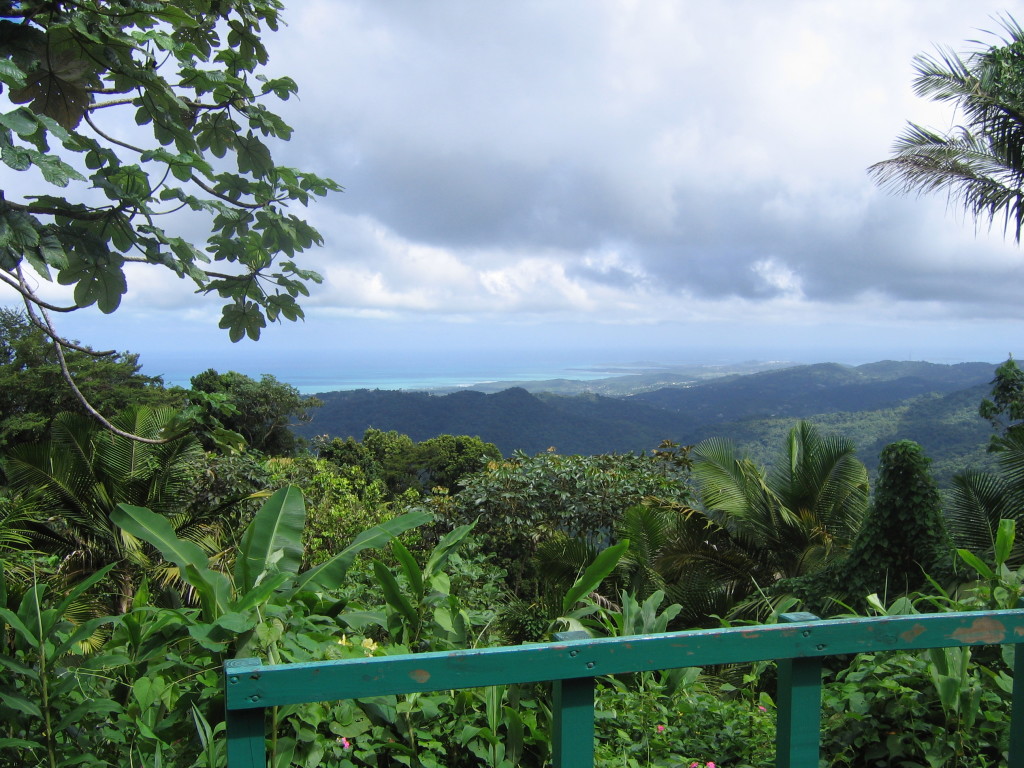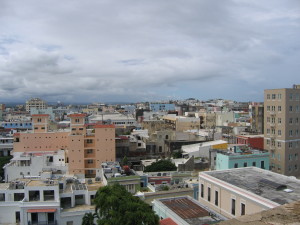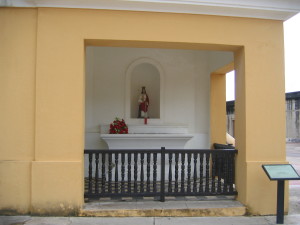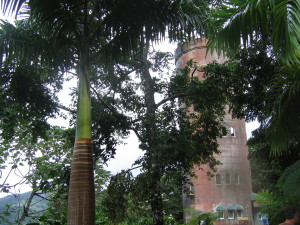Puerto Rican culture is unique unto itself. It is considered a U.S. territory, so no passport is needed for United States citizens. However, the laws of mainland American still apply. Puerto Rico is located one thousand miles away from Florida, so this can be an amazing weekend getaway for some. The most famous thing Puerto Rico is known for is its beautiful clear water and beaches, but the nightlife is also amazing! And of course don’t forget the rum, as Puerto Rico is known to be the rum capital of the world. All these many things are what make this unincorporated U.S. territory unique.
Most importantly, Puerto Ricans are very friendly so it makes this a great place to vacation, visit friends and family, or to conduct business.
A Brief History of Puerto Rico

Puerto Rico means “rich port” in Spanish. It is part of a group of islands with Puerto Rico being the smallest within the Greater Antilles. Because of where it’s located, the climate is tropical and it does experience a hurricane season; usually from June through November.
The Tainos, indigenous aboriginal people, were once the original inhabitants of this island until Christopher Columbus invaded and claimed the island for Spain in 1493. The Tainos called the island “Boriken” or “Borinquen.” The island became colonized under Spanish rule and the first settlement was named Caparra, founded by Juan Ponce de Leon. During this colonization, many of the Taino people were used as slaves. As the Tainos were nearly wiped out due to infectious diseases the Europeans brought to the island, African slaves quickly replaced this labor force.
Spain held on to this island for over 400 years, in as much as there were many attempts by the British, Dutch, and French to overtake this piece of land. Eventually Spain ceded the island to the United States in 1898 under the Treaty of Paris. Throughout all these centuries, this was one of the biggest trade and maritime centers of this region.
In 1917, Puerto Ricans became U.S. citizens; however, they were and are still not allowed to vote in general elections. If they reside in one of the 50 states, only then can they vote. They are legislated by the United States Congress and can elect their own governor.
As its legacy, Puerto Rico is also known as the port that provided provisions for those ships on their way to establish the first Jamestown Colony in Virginia. The ships were the Discovery, Susan Constant, and Godspeed.
Because San Juan, Puerto Rico, was used mainly as a port city, much of the island remained unexplored until the 19th century. This helped keep the island’s natural resources intact and beautiful. It wasn’t until three centuries after the colonization of the island by the Spaniards that a book was written capturing its rich history, which then began bringing much attention to this region.
Economy in Puerto Rico
 In the first part of the 20th century, Puerto Rico’s economy was based mostly on agriculture and sugar was its mainstay. Then things shifted to manufacturing as the U.S. began to throw millions of dollars into building factories. The U.S. began sending raw materials for these manufacturing plants, creating products at lower costs, giving tax exemptions to big companies, and then exporting products back to the United States and other countries.
In the first part of the 20th century, Puerto Rico’s economy was based mostly on agriculture and sugar was its mainstay. Then things shifted to manufacturing as the U.S. began to throw millions of dollars into building factories. The U.S. began sending raw materials for these manufacturing plants, creating products at lower costs, giving tax exemptions to big companies, and then exporting products back to the United States and other countries.
Puerto Rico today, however, is subject to U.S. trade laws and restrictions and is in high competition with other local bordering economies that are not subject to these regulations. This makes it very difficult and competitive for this small island.
Because Puerto Ricans are U.S. citizens, they can freely travel to the mainland. As a result, many of those that have migrated to the mainland have not returned to Puerto Rico. This has caused much drain on people resources. It’s believed that more people of Puerto Rican birth live in the mainland U.S. versus the island of Puerto Rico.
Tourism, however, continues to be a big revenue producing item for Puerto Rico. Over five million people tend to visit this island yearly, and as such, many new hotels and tourist type products have emerged. The average household income is around $18,500 per year for a median household.
Food, Education, Religion, and Language Spoken in Puerto Rico
Puerto Rican food is heavily influenced by centuries of Spanish rule, by African foods that came by way of slaves brought to the country, and the Amerindian Tainos. In the latter part of the 19th century, it has been influenced by U.S. cuisines. As other cultures have moved into this region, this has also brought in other foods that are fast becoming part of the Puerto Rican experience.
From the Taino people there are foods such as the yuca (also known as cassava), ajicito (habanero pepper), peanuts, lerenes (Guinea arrowroot), tropical pumpkins, and various beans and maize (corn). From the Spanish it has taken garbanzo beans, olives, black pepper, cilantro, ham, lard, and cheese. From the Africans, it has gained coconuts, coffee, yams, plantains and fried foods.
Puerto Rico is known for making some of the tastiest food in the region. Things such as cuchifritos (fried foods but mostly pork), alcapurrias (stuffed meat covered by dough made from mashed tubers and root vegetables then fried), galletas de soda (soda crackers), mofongo (fried plantain dish), and arroz con gandules (rice with a green bean/pea) are just some of the few.
 Education in Puerto Rico is based on the same system as in the mainland United States; however, this is overseen by the Government of Puerto Rico. This is comprised on a primary and secondary school system. Students have to attend until the age of 18 and they can attend either public or private schools. The literacy rate is at about 93.9% for males and 94.4% for females. About 60% attain their high school diploma and over 18% go on to college and get a bachelor’s degree or higher.
Education in Puerto Rico is based on the same system as in the mainland United States; however, this is overseen by the Government of Puerto Rico. This is comprised on a primary and secondary school system. Students have to attend until the age of 18 and they can attend either public or private schools. The literacy rate is at about 93.9% for males and 94.4% for females. About 60% attain their high school diploma and over 18% go on to college and get a bachelor’s degree or higher.
The dominant religion on the island is the Roman Catholic Church. There is, however, a variety of other religions that are practiced throughout the island. Just as in many cultures of today with everything being more of a global society, many people with different faiths have settled on this island. You will see Protestants, the Iglesia Santisima Trinidad, Eastern Orthodox, Jewish, and other religions and faiths represented.
Spanish is fluently spoken in Puerto Rico; although, many people speak English as this is a required second language in all schools. Just make sure to bring a translation mobile device if you don’t speak Spanish; however, it’s still pretty easy to get around and find someone who does speak English.
Things to see in Puerto Rico
 There is so much to see in Puerto Rico. One of the major attractions, besides the beaches, is the tropical rainforest in Puerto Rico. It is called El Yunque and is outside of San Juan. You can go hiking, swimming, picnic by the waterfalls, or watch the tropical wildlife. There are amazing birds and flowers. The best thing about the rainforest is that there is nothing particularly dangerous, so if you get lost and can’t find your way back to a main road so quickly, don’t be frightened. There are no big cats or animals that can hurt you.
There is so much to see in Puerto Rico. One of the major attractions, besides the beaches, is the tropical rainforest in Puerto Rico. It is called El Yunque and is outside of San Juan. You can go hiking, swimming, picnic by the waterfalls, or watch the tropical wildlife. There are amazing birds and flowers. The best thing about the rainforest is that there is nothing particularly dangerous, so if you get lost and can’t find your way back to a main road so quickly, don’t be frightened. There are no big cats or animals that can hurt you.
Coqui is native to Puerto Rico. So what is it? Well, it is a national symbol. He or maybe she is a tree frog. They love to sing and can actually be heard for miles around. Locals are accustomed to this sound, but newcomers can feel frightened if they are not familiar with this noise.
With Puerto Rico being in the Caribbean, it is a great place to also go on a cruise. San Juan is the capital of Puerto Rico and its many colorful buildings throughout the city are a sight to experience. A must see is “El Morro,” a military powerhouse which was built to guard the entrance to the harbor. In addition, Fort San Cristobal is a 27-acre fort built by the Spanish to also house soldiers and their canons. Both are impressive and shouldn’t be missed when making a trip to this region.
Puerto Rico is a beautiful island with beautiful and hospitable people. Its magic is not only the surrounding nature or beaches, but the overall history, culture, and traditions.




